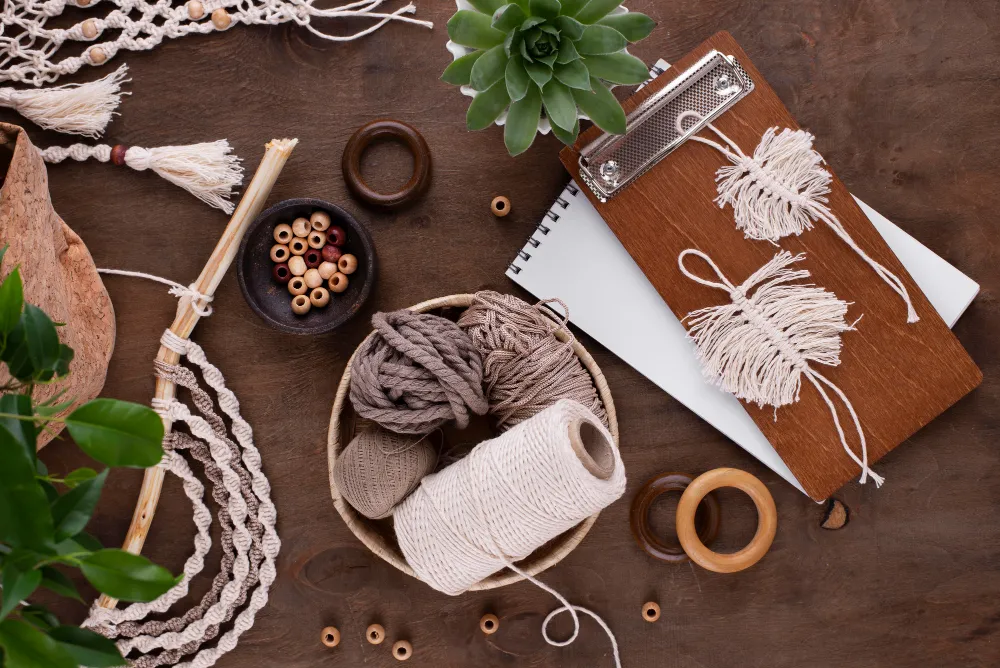 Industry Trends
Industry Trends
Why Handloom Is More Than Just Fabric — It’s a Legacy
In the world of fashion and textiles, trends come and go. Styles shift. Machines get faster. But amidst this constant change, one thing remains timeless — handloom. It’s more than just a method of weaving cloth. Handloom is heritage. It’s culture, craft, and community all woven into one. And most importantly, it’s a living legacy passed down through generations. At Haryana Handloom, we see every woven piece not just as fabric, but as a symbol of legacy — a story that deserves to be worn, celebrated, and preserved. A Tradition Rooted in History Handloom weaving in India is as old as civilization itself. References to handwoven textiles date back to the Indus Valley Civilization. Haryana, in particular, has long been a hub of rich weaving practices, known for its cotton durries, shawls, and woolen fabrics. These textiles were not just garments or utility items — they were part of social rituals, trade, and identity. A woman’s wedding trousseau, a farmer’s turban, a festive sari — all were often handwoven, carrying deep emotional and cultural value. Today, even as fast fashion dominates the global market, handloom continues to hold its ground — because it’s tied not just to a product, but to purpose and pride. It’s Handmade, Heart-made Handloom is a process steeped in skill and patience. Unlike powerloom fabrics made in bulk, handloom textiles are woven one thread at a time, by artisans who have often spent decades mastering their craft. Each piece: Is made without electricity, reducing carbon footprint. Is unique, bearing slight variations that highlight the artisan’s hand. Carries regional identity, with motifs and patterns inspired by local culture, folklore, and environment. This “imperfection” is, in fact, its greatest beauty. No two handloom items are exactly alike — just like the people who make and wear them. Supporting Artisans & Rural Livelihoods In India, more than 43 lakh people depend on handloom weaving for their livelihood. Many of them are from rural areas, where opportunities are limited and traditions are the backbone of daily life. When you buy a handloom product, you’re not just getting a beautiful item — you are: Supporting a family Empowering women weavers Preserving rural skills Boosting local economies At Haryana Handloom, we directly collaborate with local artisans, ensuring fair wages, safe working conditions, and respect for their artistry. For many of them, weaving is not just a job — it’s a source of identity, independence, and dignity. A Sustainable Choice in a Fast-Fashion World The fashion industry is one of the largest polluters globally. Fast fashion has made clothing cheaper but at a high cost to the environment — excessive water use, toxic dyes, and landfills full of discarded clothes. Handloom, by contrast, is: Low-impact: Uses minimal water and energy Biodegradable: Made from natural fibers like cotton, silk, or wool Durable: Lasts longer due to high-quality weaving Slow fashion at its finest By choosing handloom, you’re choosing a planet-friendly path — one that honors tradition while safeguarding the future. A Legacy of Stories and Soul Every handloom item has a story — of the weaver who learned the art from their grandmother, of the pattern inspired by a village festival, of a fabric dyed under the summer sun. It’s a form of storytelling through thread, where generations of wisdom are passed not through books, but through hands and heart. This emotional value makes handloom pieces heirlooms, not just clothing. Imagine gifting a handwoven dupatta or kurta — it’s not just a present, it’s a piece of history, a gesture of depth and respect. ???? Why We Must Preserve This Legacy In recent years, handloom has faced many challenges — competition from mass-produced goods, lack of visibility for artisans, and a decline in traditional knowledge. But there’s hope. There’s a growing movement of conscious consumers who want to make mindful choices. People are realizing that slow, handmade, and sustainable is not old-fashioned — it’s the future. That’s why platforms like Haryana Handloom exist — to bridge the gap between rural artisans and modern buyers, and to ensure that the legacy of handloom doesn’t fade away. Final Threads Handloom is more than just fabric. It’s a living art form.It’s a bridge between past and present.It’s a tool for empowerment and sustainability.And most importantly — it’s a legacy that belongs to all of us. So the next time you wrap a handwoven stole around your shoulders or spread a handloom bedsheet across your home, know this: You’re not just embracing craftsmanship. You’re embracing a tradition that connects us all — one thread at a time.
Read More





